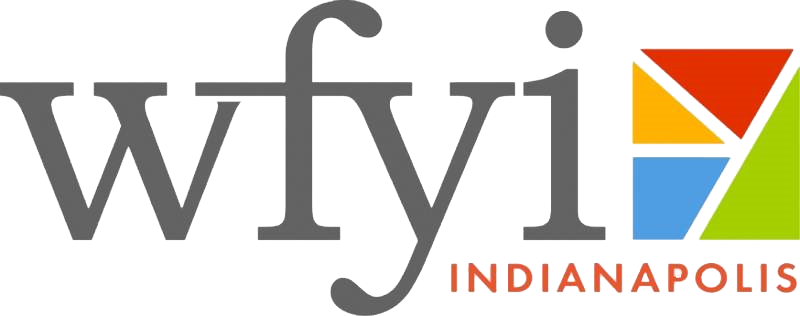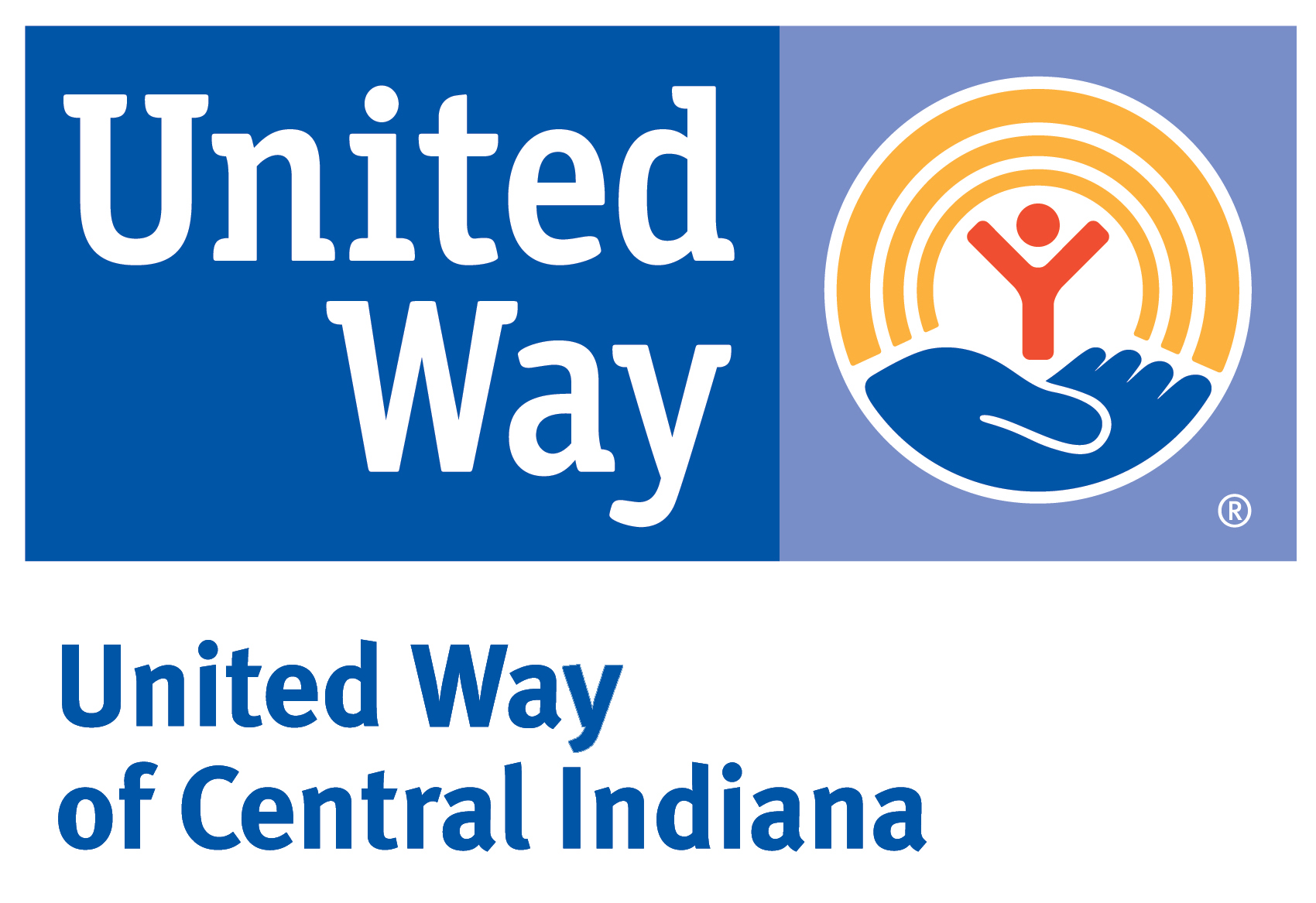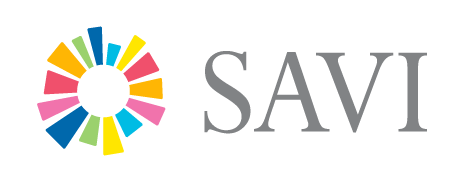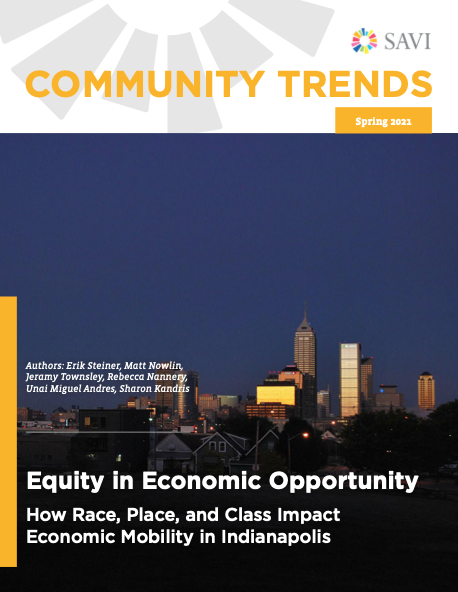Equity in Economic Opportunity
SAVI Talks - March 25, 2021Building on research by Harvard’s Raj Chetty and his team, we are developing new insights and highlighting findings about opportunity in Indianapolis neighborhoods. The average child born into a high-income family in Indianapolis earned $50,000 in household income when they were about 35. Children born to low-income families grew up to earn $27,000.
- Indianapolis’ level of opportunity for low-income children is lower than all but two of the largest U.S. cities. Only Atlanta and Charlotte have worse outcomes than Indianapolis.
- The average Black child born in Indianapolis earns $9,000 less than the average White child. There is a spatial disparity too: In many neighborhoods, children who grew up there earn less than $20,000 per year. In other neighborhoods, children born at the same income level grow up to earn $35,000 or more.
- Neighborhoods that are segregated clearly have lower opportunity outcomes for children. People born into Redlined neighborhoods have less economic opportunity, even when controlling for their parents’ income.
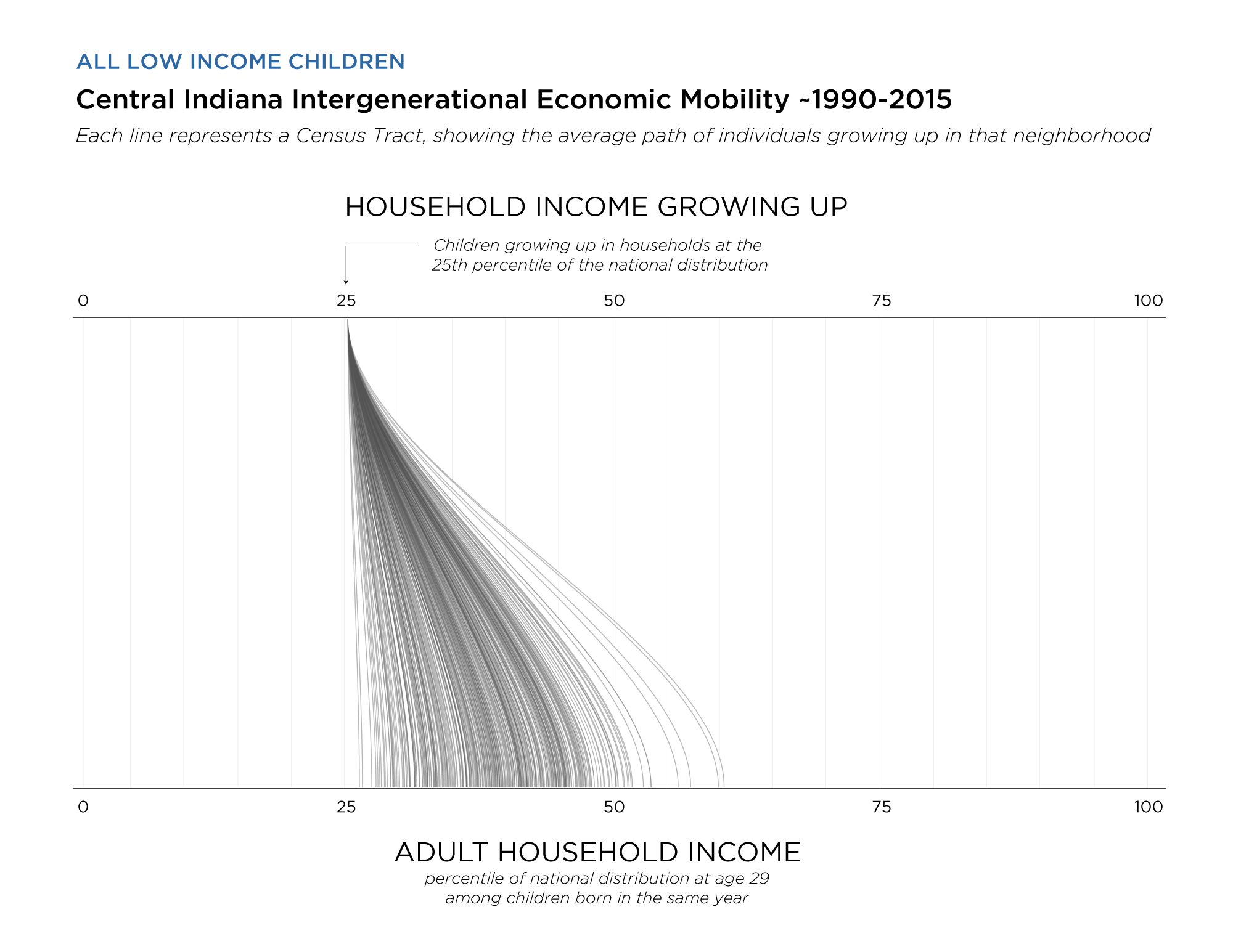
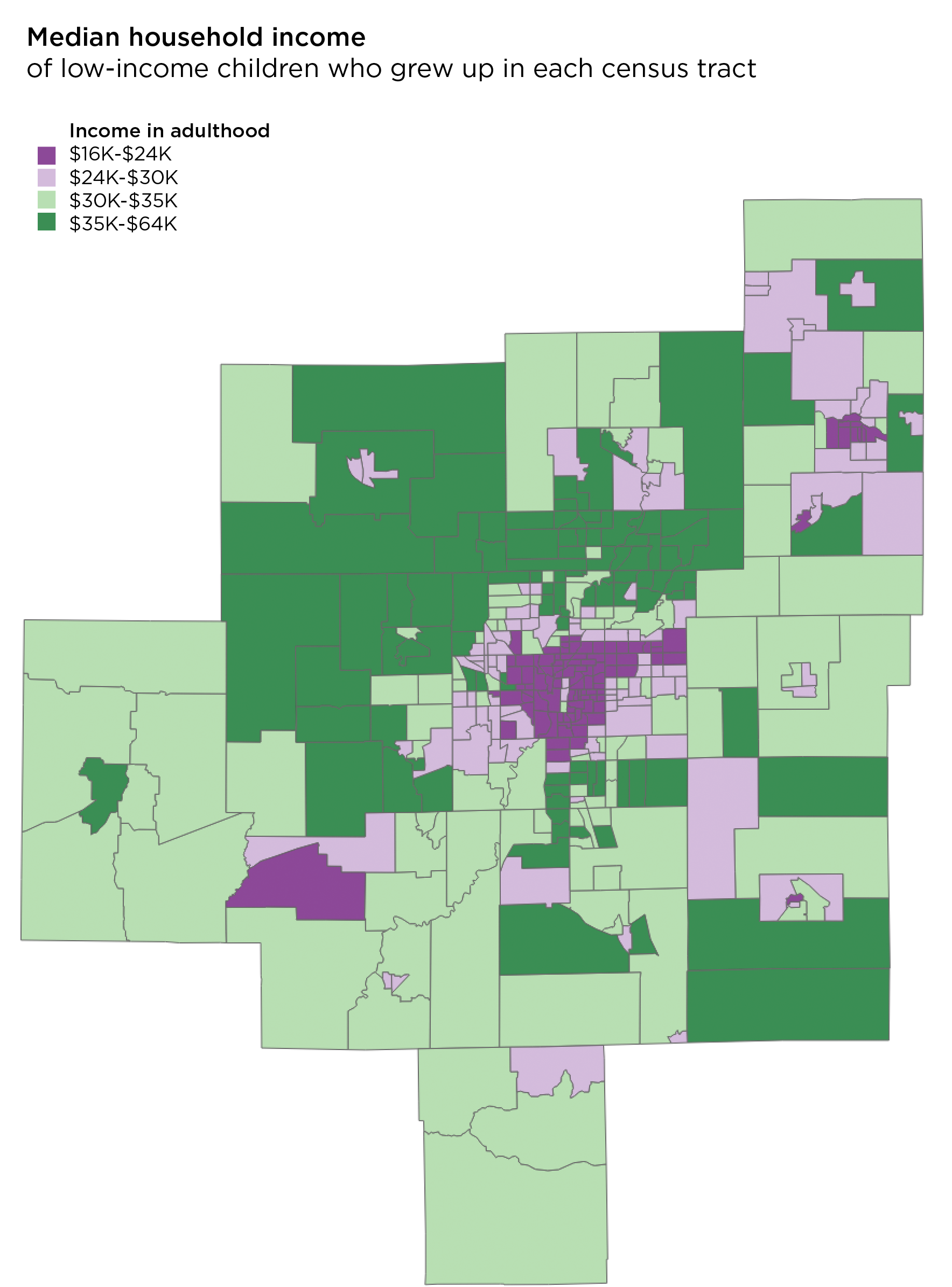
Articles and Story Maps
Explore other research and interactive content we have developed around equity.
Who Rides the Bus: Examining Transit Ridership in Marion County
This research combines information from the recent IndyGo survey with a variety of neighborhood socio-economic factors from the SAVI community information system to better understand how and why certain groups of riders used the service. The report provides general...
The Big-Picture Transformation of Health Care
There is one clue that speaks volumes about your health prospects but has nothing to do with your medical records.
How Density Affects Destiny When It Comes to Tobacco Access
Greater density of tobacco retailers has been associated with higher rates of smoking. In “high access” areas, the poverty rate is more than three times higher than in “low access” areas.
Understanding the “Why” Behind the “What” in the Spread of Disease
Dr. Patrick Lai is combining data from the Indiana Network for Patient Care and SAVI to understand which neighborhoods have higher rates of STDs and why.
Unequal Access: Tobacco Retail in the Indianapolis Metro Area
Retail access to various smoking products is an important consideration when discussing community action to improve a community’s health. Studies show that tobacco outlet density and proximity are linked to tobacco use–particularly in poor areas. We used...
Who Has Access to Groceries and Farmers’ Markets?
The USDA defines food deserts as a census tract where “at least 500 people and/or at least 33 percent of the census tract's population reside more than one mile from a supermarket or large grocery store." [usda.gov] This is a useful definition, but of course food...
How Does Tree Coverage Relate to Built and Natural Environment?
This post comes from Ian Adams, our undergraduate Service Learning intern this semester. In light of Arbor Day this week, let's talk trees in Indianapolis. As a whole, one-third of Indianapolis’s total land area is covered by tree canopy. Out of the 99 neighborhood...
Using the Community Assessment Tool
Quickly Learn About Your Community Discover. Explore. Monitor. With SAVI’s new Community Assessment Tool, it’s a breeze to create a report about needs and assets for any scope your organization chooses. What resources does a community already have? What’s the poverty...
The Affordable Housing Market and Why It Matters
The People and Places Poverty Impacts the Most
This is part of our IndyVitals blog series, exploring the data behind IndyVitals.org. Poverty does not affect all populations equally. Unfortunately, women, people of color, and people with less education are statistically more likely to fall below the poverty line....
Authors
Sharon Kandris
Associate Director,
The Polis Center
Jay Colbert,
Data Manager,
The Polis Center
Jeramy Townsley,
Visiting Research Analyst,
The Polis Center
Matt Nowlin,
Research Analyst,
The Polis Center
SAVI Talks Panelists
Patrice Duckett
Exec. Director
Fay Biccard Glick Crooked Creek Neighborhood Center
Amy Nelson
Exec. Director
Fair Housing Center of Central Indiana
Pamela Ross
VP of Opportunity, Equity & Inclusion
Central Indiana Community Foundation
SAVI Talks Moderator
Jill Sheridan
Health & Science Reporter
Indiana Public Broadcasting, WFYI
Event Partners
